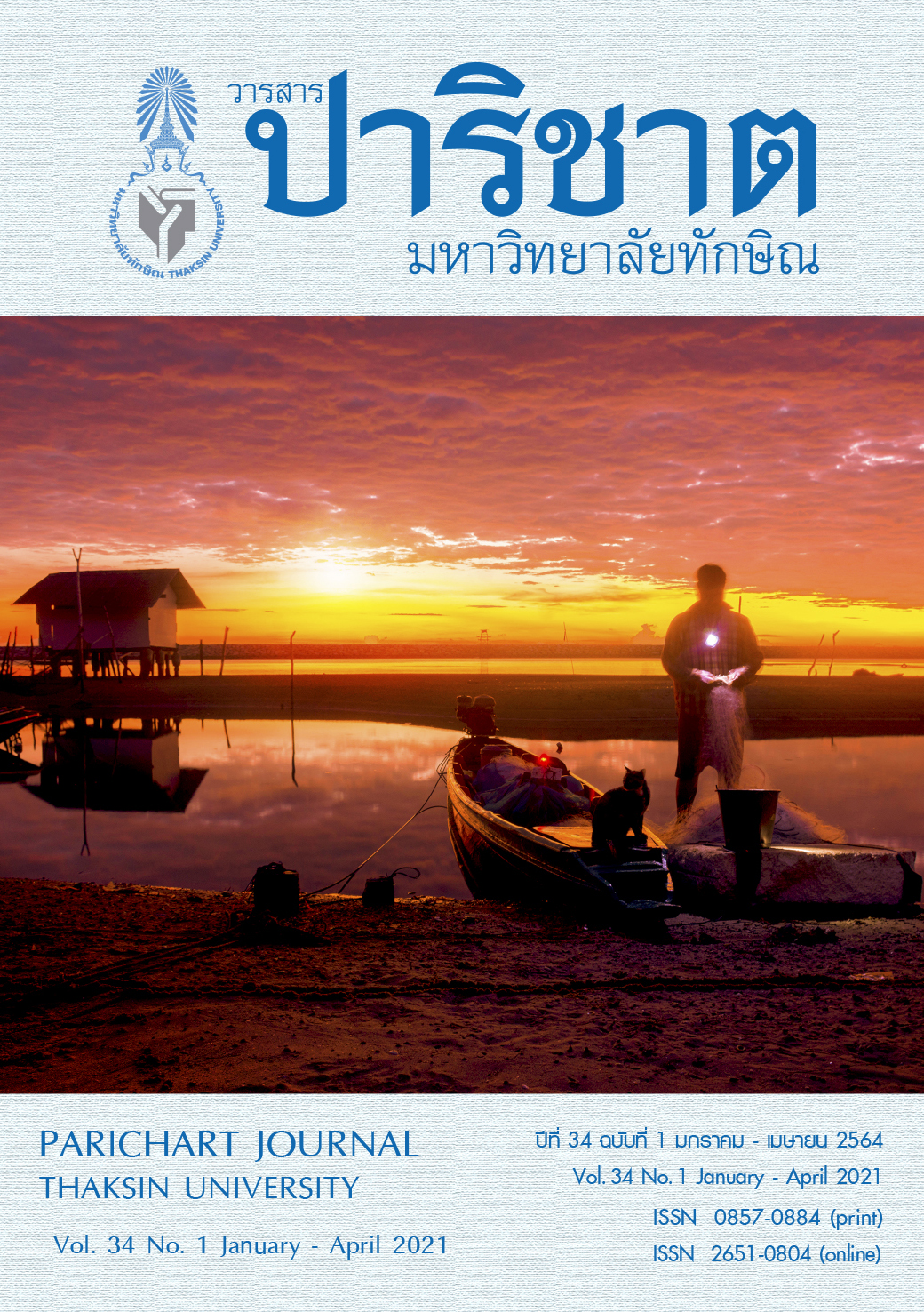ปัจจัยที่มีผลต่อรายจ่ายด้านการศึกษาในประเทศที่มีรายได้ต่ำและ ประเทศที่มีรายได้ปานกลางค่อนข้างต่ำ
Main Article Content
บทคัดย่อ
บทความวิจัยนี้มีวัตถุประสงค์เพื่อวิเคราะห์ปัจจัยสำคัญที่มีผลต่อรายจ่ายด้านการศึกษาระดับประถมศึกษาและมัธยมศึกษาในประเทศที่มีรายได้ต่ำและประเทศที่มีรายได้ปานกลางค่อนข้างต่ำ และเพื่อเสนอแนะเกี่ยวกับการจัดสรรรายจ่ายด้านการศึกษาให้กับกลุ่มพื้นที่ที่มีฐานะยากจนและความเสมอภาคทางการศึกษาไม่ทั่วถึง ได้ใช้วิธีการวิจัยเชิงปริมาณเป็นหลัก และการวิจัยเชิงเอกสารสนับสนุน กลุ่มตัวอย่าง คือ ประเทศที่มีรายได้ต่ำ และประเทศที่มีรายได้ปานกลางค่อนข้างต่ำ จำนวน 45 ประเทศ ผลการวิจัยพบว่า รายได้ของรัฐมีผลต่อรายจ่ายด้านการศึกษาระดับประถมศึกษาอย่างมีนัยสำคัญ โดยรัฐควรเน้นจัดสรรให้กับกลุ่มนักเรียนที่ยากจนขาดโอกาสการศึกษาขั้นพื้นฐาน อีกทั้ง การว่างงานสูงมีผลต่อการเพิ่มขึ้นของรายจ่ายด้านการศึกษาระดับมัธยมศึกษาอย่างมีนัยสำคัญ รัฐควรจัดการศึกษาให้สำหรับนักเรียนมัธยมศึกษา เพื่อเตรียมความพร้อมสำหรับการเข้าสู่ภาคตลาดแรงงาน เช่น การเพิ่มทักษะ นอกจากนี้ การคอร์รัปชันต่ำมีผลต่อรายจ่ายด้านการศึกษาระดับมัธยมศึกษาอย่างมีนัยสำคัญ ซึ่งควรให้รัฐสามารถจัดสรรงบประมาณภาคการศึกษาได้อย่างเต็มที่เพื่อการพัฒนาประเทศ
Article Details
เอกสารอ้างอิง
Kongsri, N. (2017). From the MDGs to the SDGs, development goals change for sustainability. Retrieved February 13, 2018, from : https://sdgmove.com/2017/08/13/mdgstosdgs/. (In Thai)
Balatsky, E. (2012). Wagner’s Law, the Armey–Rahn Curve, and the Paradox of Wealth. Problems of Economic Transition, 54(12), 40–54.
Phutrakhul, P. (2018). Public expenditures in dimension of human capital development. Nakhon Lampang Buddhist College’s Journal, 7(1), 352–367. (In Thai)
OECD. (2010). Counter-cyclical economic policy. “OECD Economics Department Policy Notes, No. 1”. Economics Department Organisation for Economic Co-operation and Development.
Emily, B., & William, W. (2017). Globalization and human capital investment : Export composition drives educational attainment. Seminar participants at the NBER, March 30, 2017, 1-63.
Berthelemy, J. C. (2006). Globalization and challenges for education in least developed countries. Globalization and Education Pontifical Academy of Social Sciences, Extra Series 7, 166 – 190.
Lindert, P. H. (2004). Growing public : Social spending and economic growth since the eighteenth century. United States : University of California.
Thepsumroeng, A. (2019). The study of income distribution in Thailand : A case of GINI coefficient of household in 2009 – 2017. Journal of Social Development, 21(1), 41–58. (In Thai)
Easton, D. (1965). A Systems Analysis of Political Life. New York : Wiley.
Ulu, M. I. (2018). The effect of government social spending on income inequality in oecd: a panel data analysis. International Journal of Economics Politics Humanities and Social Sciences, 1(3), 183–202.
Lagravinese, G. C. R. (2012). Incentive effects on efficiency in education systems’ performance. ECINE, Working Paper Series 2012 – 270, October 2012, 1–21.
Jajkowicz, O., & Drobiszova, A. (2015). The effect of corruption on government expenditure allocation in OECD countries. Acta Universitatis Agriculturae et Silviculturae Mendelianae Brunensis, 63(4), 1251–1259.
Suryadarma, D. (2012). How corruption diminishes the effectiveness of public spending on education in Indonesia. Bulletin of Indonesian Economic Studies, 48(1), 85–100.
Timofeyev, Y. (2011). How corruption affects social expenditures : Evidence from Russia. Global Journal of Business Research, 5(4), 39–51.
CESifo DICE Report. (2011). The worldwide governance indicators (WGI). Retrieved April 11, 2019, from: https://www.cesifo-group.de/DocDL/dicereport411-db4.pdf.
World Bank. (2017). New country classifications by income level: 2017-2018. Retrieved January 8, 2018, from: https://blogs.worldbank.org/opendata/new-country-classifications-income-level-2017-2018.
World Bank. (2018). Countries and economies. Retrieved January 28, 2019, from: https://data.worldbank.org/country.
Krejcie, R. V., & Morgan, D. W. (1970). Determining sample size for research activities. Educational and Psychological Measurement, 30(3), 607–610.
Gujarati, D. N. (2003). Basic econometrics (4th ed.). Singapore: McGraw Hill.
Omwami, E. M., & Omwami, R. K. (2010). Public investment and the goal of providing universal access to primary education by 2015 in Kenya. International Journal of Educational Development, 30(3), 243–253.
Fredriksen, B., & Fossberg, C. H. (2014). The case for investing in secondary education in sub-Saharan Africa (SSA): challenges and opportunities. International Review of Education, 60(2), 235–259.


